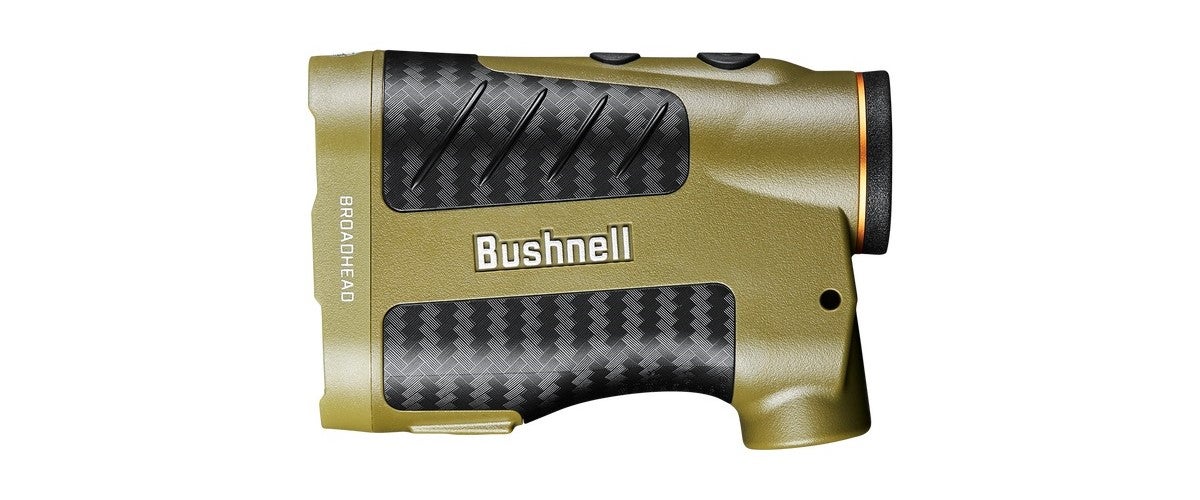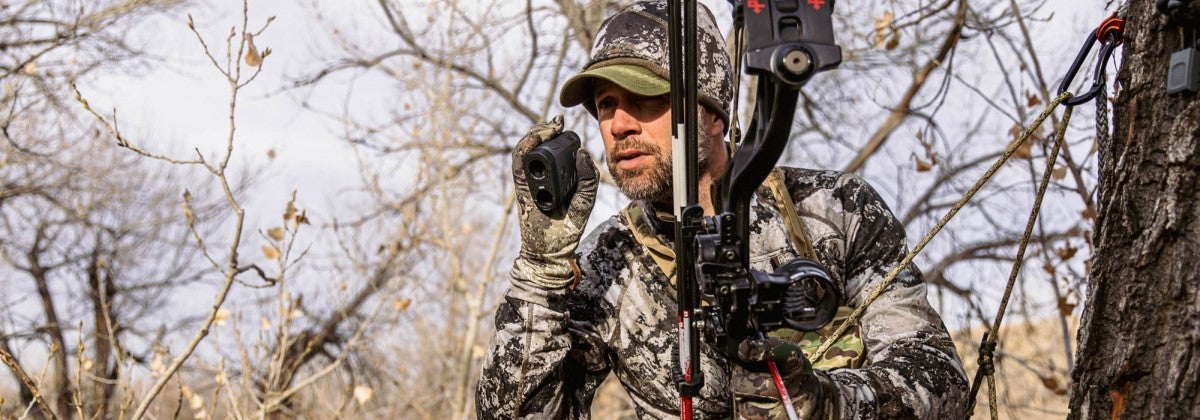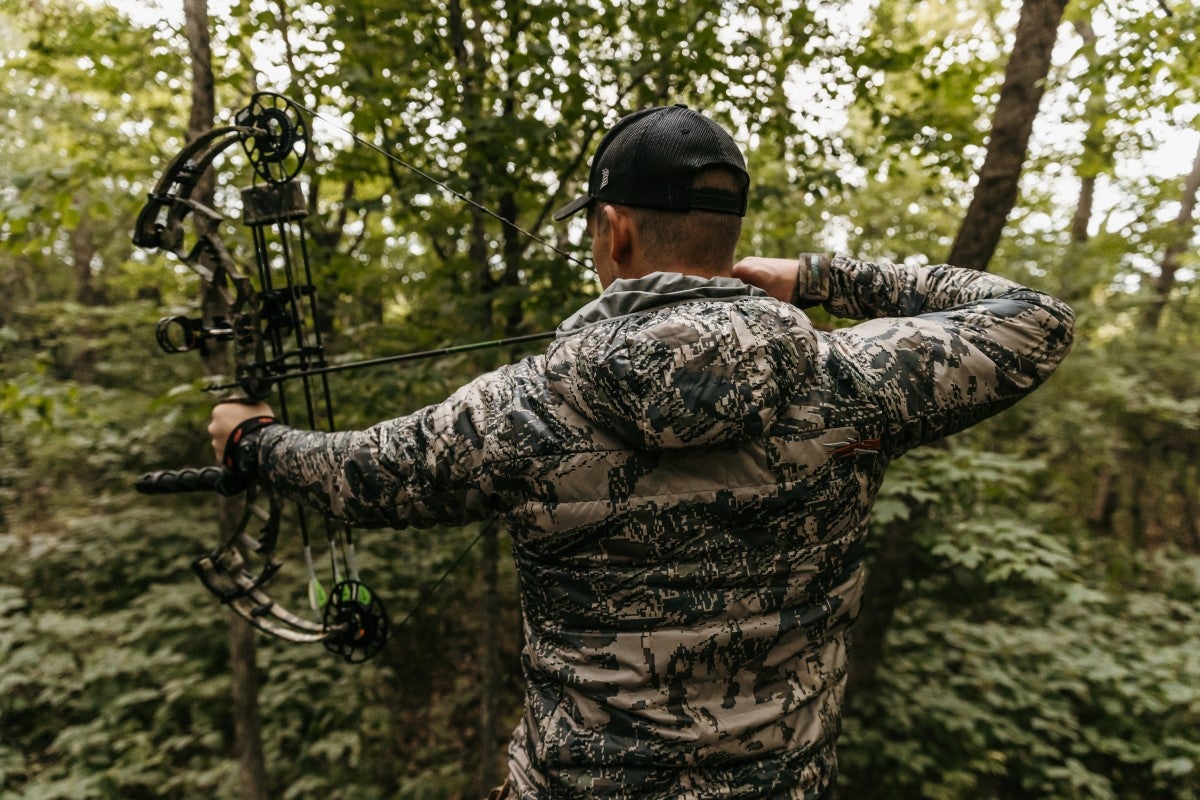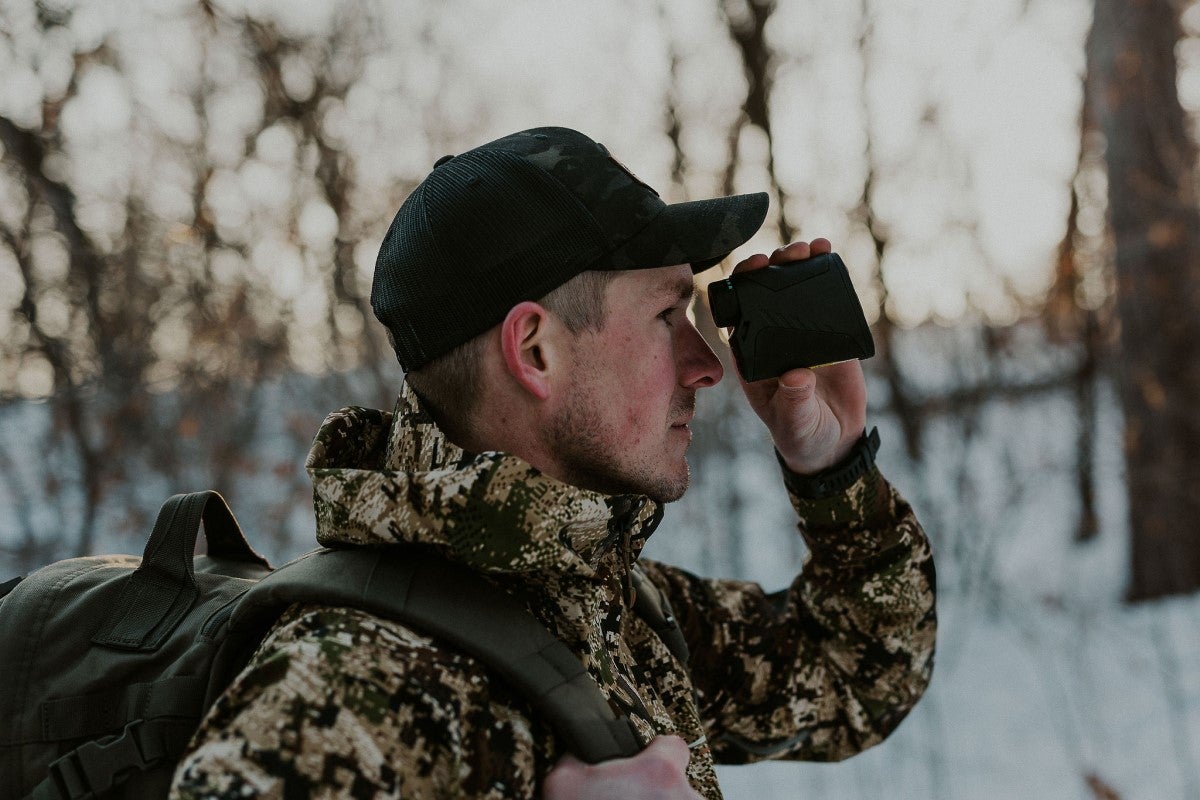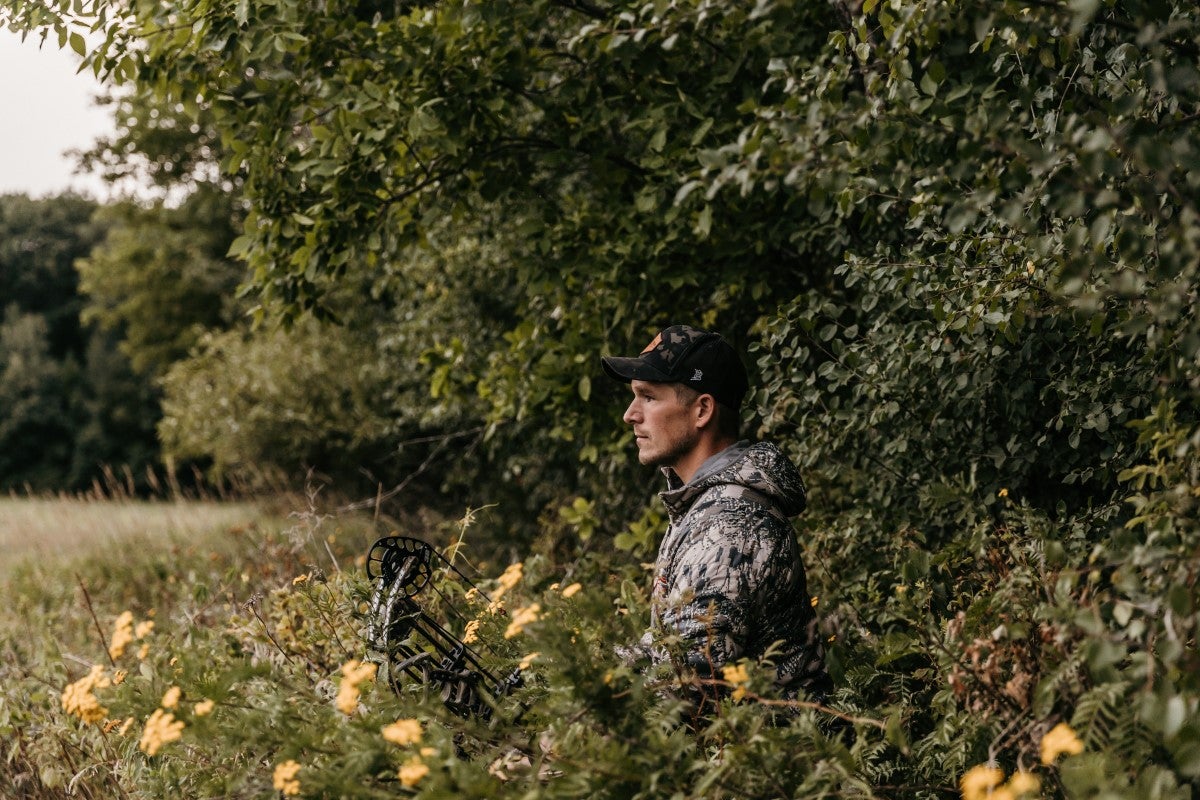The Best Rangefinders for Bowhunting Guide 2025
Adam Scepaniak 09.05.24
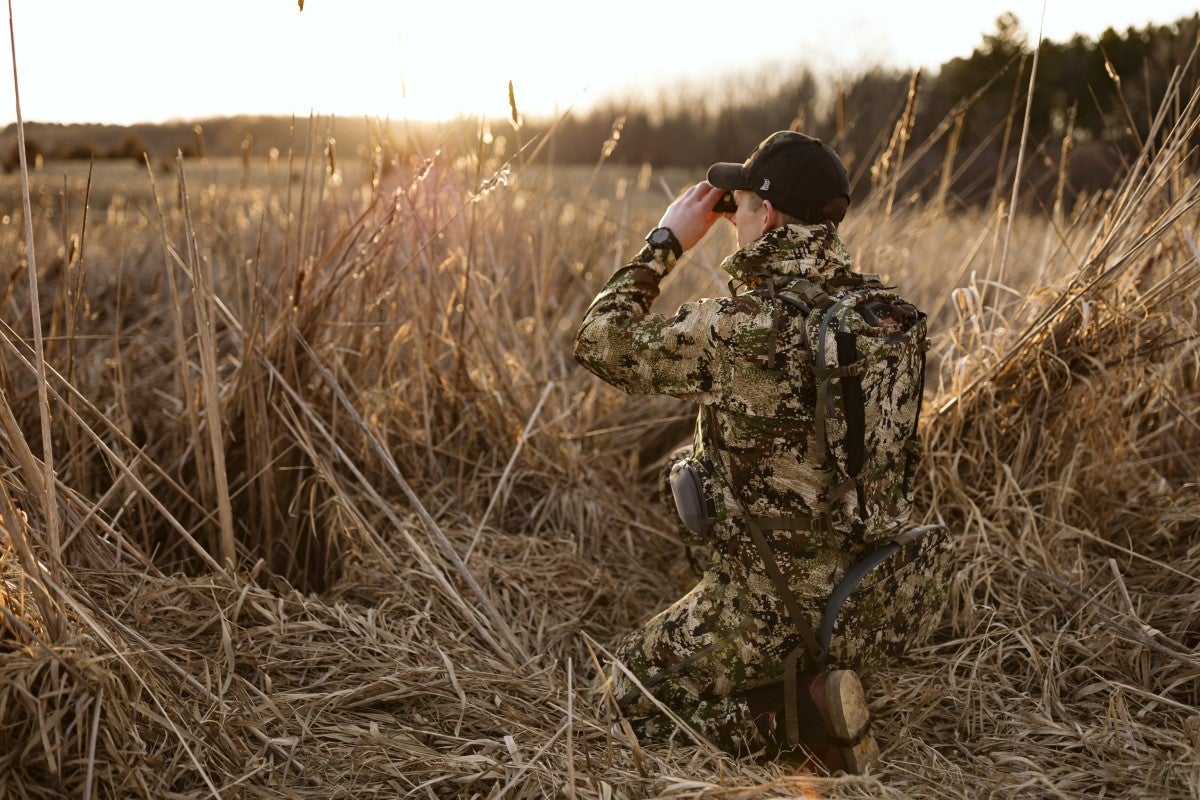
Many of us were introduced to, or made aware of, archery at a very young age. Whether it was through childhood games like “cowboys and Indians” with a cheap Fisher Price bow or watching real cowboys and Indians like classic John Wayne films. The imagery for both remained the same: Someone with a bow straining to pull it back, pointed towards the sun, and arcing an arrow towards your target. Even short distances with modern technology have some arc involved that needs to be accounted for. That is why laser rangefinders (LRF) — specifically tailored for archery — matter.
For many of us who hunt or shoot 3D targets, we have seen it before. You’re staring at a deer or target a good distance away from you—far enough that you can’t guess the yardage with 100% certainty. You let an arrow fly and it looks like it’ll make a perfect impact until at the last moment it ducks under the belly of the deer. You missed!
Even if you had used a traditional rangefinder, that may not have helped because it wouldn’t have accounted for the arc of your arrow’s path. Yes, even when we shoot firearms the path of a bullet is in an arc, but it takes 10x the distance before the arc begins to matter. So, a laser rangefinder that can account for the arcing path of an arrow is important — whether you are on flat ground or hanging off of the side of a tree or not.
A rangefinder with arc technology built in can significantly increase your success rate on 3D targets as well as wild game on your next hunt. They are valuable tools worth the investment.
See also:
- The Best Beginner Compound Bows
- The Best Hunting Bows
- The Best Bow Sights
- The Best Compound Bow Stabilizer
- The Best Ground Blind for Bowhunting
The Best Rangefinder for Bowhunting: Leupold RX-FullDraw 5
The Leupold RX-FullDraw 5 represents all of the modern technology and advantages you could ever hope for in a dedicated archery rangefinder. This rangefinder has software that accounts for your arrow’s speed, its weight, your peep height, the angle at which you are shooting, and even your arrow’s flight path. It is all the nerdy goodness you want tailored specifically for archery; not firearm tech that is pawned off as serviceable for archery.
- TBR-Archery: Archer’s Advantage bow ballistics uses your arrow weight, arrow velocity, and peep height to calculate more accurate ranges for steep angle and long distance shots.
- Red OLED Display: OLED displays use bright red characters and have adjustable brightness setting. This display technology also enables best in class light transmission for use in low-light conditions.
- FlightPath: Flightpath™ technology uses your bow’s ballistics to display the highest point of your arrow’s flight, so you can take tighter shots with more confidence.
- Line of Sight (LOS) Mode: Line of Sight (LOS) calculates the distance to a target in a straight line, regardless of any incline or decline.
At an MSRP of $499.99, this laser rangefinder (LRF) is not too expensive, yet it still feels like a tremendous value proposition for the tech, durability, and legendary name that Leupold represents. Speaking of which, the Leupold RX-FullDraw 5 is waterproof, “extreme climate tested,” and its Last Target mode can punch through rain and fog in some of the most adverse weather conditions that you might be hunting in. For all of these reasons and more, the Leupold RX-FullDraw 5 is the best rangefinder for bowhunting on the market today.

The Best Budget Rangefinder: Bushnell Broadhead
Bushnell was the first company to craft a rangefinder in the outdoor/hunting market, and they still are near the cutting edge of what bowhunters are looking for. The Bushnell Broadhead is a dedicated archery laser rangefinder (LRF) that touts a class-leading 0.3 yard margin of accuracy with its ranging ability.
- Full Spectrum Ranging System: The Full Spectrum Ranging System of the Broadhead gives consistent ranges no matter the lighting conditions, time of day, or type of target. You get the same distance each and every time for full confidence on the course or in the field.
- Angle Range Compensation: ARC Technology with +/- 1-degree angle accuracy – ARC (Angle Range Compensation) simultaneously gives you true horizontal distance as well as line of site distance making your up and downhill shots just as accurate as those on level ground.
- ActivSync Reticle Technology: Auto-adjusting black-to-red reticle and display fluidly morphs to your background for maximum contrast and visibility in all conditions.
- 2X Brighter Imaging: A 50% larger objective lens, an all-glass optical system, and fully multi-coated lenses combine to give you imaging that’s up to 2x brighter than the competition. This adds critical time at dusk & dawn where you’ll be able to still see when others can’t.
The Bushnell Broadhead offers wonderful features for an archery rangefinder that is under $300 (MSRP $299.99). It offers ARC technology (which we will discuss in greater detail) so whether you are on flat ground or not, you are receiving appropriate distance readings for archery shooting. Plus, the Bushnell Broadhead offers brighter images and correct distance readouts regardless of the environment and weather you are enduring outside. For the money, the Bushnell Broadhead is a great buy and secures our best budget rangefinder spot for bowhunting.

Upgrade Pick: SIG Sauer Kilo4K
The SIG Sauer Kilo4K rangefinder is unique because it offers something called Image Stabilization technology. If you have ever been in the field and had “buck fever” where you’re shaking like a leaf and can’t calm down, this rangefinder can stabilize the image you’re looking at so it’s easier to tell if you’re ranging a trophy whitetail or a patch of brush you totally thought was a big buck.
- Optical image stabilization for long-distance, razor-sharp imaging
- Gen II lightwave DSP ranging engine
- Onboard temperature, pressure, and humidity sensors for accurate real-time ballistic calculations
- 5 target modes; first, best, last, fog, extended range
- 5 range modes; BDX-U, BDX-X, AMR, LOS, Archery
- Drop remote waypoints with BASEMAP app
The SIG Sauer Kilo4K has an MSRP of $599.99 making it the most expensive of our recommendations, but with Optical Image Stabilization and AMR technology—ranging tech that uses an on-board inclinometer that reads incline/decline angle and modifies the effective ballistic shooting range to your target—this rangefinder may be worth it for your bowhunting exploits.
What is a Rangefinder for Bowhunting?
The first rangefinder on the market was produced by Bushnell in 1996. It was considered “space technology” at the time, because NASA used it to retrieve space shuttles, and Bushnell brought it to the worlds of archery and firearms.
It measures distance by shooting a laser at a given object and measuring the amount of time it takes for the laser to reflect or return. More explicitly, through a complex equation that is solved in a second or less, your given distance is calculated by the speed of light and the time it took for the laser to travel and return.
So, how does this all assist us in archery? With the tech that Bushnell took from the space industry and brought to the worlds of archery and firearms, we could now reliably sight the distance to targets and game animals to more confidently engage them. “It was the dawn of knowing and the death of guessing,” Bushnell said. It meant fewer arrows soaring underneath a deer’s belly and more accurate, humane shots on game.
What specifically helps archers—other than the ability to generally range targets—is what’s considered ARC technology (Angle Range Compensation). ARC technology is a phrase once again coined by Bushnell, but it’s an acronym loosely used by the entire rangefinder industry. Some laser rangefinders (LRF) will have an inclinometer built-in to assess the angle at which you are ranging an object. This can matter for mountain archers who shoot at extreme upward or downward angles on a mountain, as well as hardwood hunters in elevated treestands.
Why Do You Need a Rangefinder for Bowhunting?
The reason why you need to add a rangefinder to your hunting pack is that precise distance measurement matters. Your bow’s arrow is traveling somewhere around 300 FPS (feet per second) while a rifle’s bullet may be flying by at 3,000 FPS. So, a bow’s arrow drops off significantly faster. Its arc occurs vastly quicker and is much more dramatic. So, to be a good steward to all of the animals that we hunt, we only want to engage or shoot at something that we are confident we can make an ethical, harvesting shot at. A rangefinder helps with that.
For example, if you are a hunter who loves to hunt in the clouds and your hang-on treestand is 20 yards up a tree, if you then attempt to shoot a deer that is 5 yards away from the base of your tree, what pin sight or distance should you account for? 25 yards? 20 yards? Or, 5 yards? Your ARC equipped rangefinder will tell you that the distance you need to account for is much closer to 5 yards than 25 yards. Science! Similarly, if you are hunting in the mountains, an extreme angled shot upward or downward might be difficult to calculate in your head on the fly. So, a laser rangefinder (LRF) with ARC technology is supremely helpful.
Key Features to Look for in a Bowhunting Rangefinder
Angle Compensation
As we’ve previously mentioned, angle compensation or ARC (Angle Range Compensation) technology is a blanket term used by most rangefinder companies even though it is a phrase and acronym originally coined by Bushnell. ARC technology in rangefinders is important to archers because of the odd and precarious angles that we shoot from, and “not all distances are equal.” When we shoot from great heights in a tree or up the side of a mountain, that 25 yard distance might equate to some other distance we need to account for with our bows.
Range Distance
As bowhunters, we only want to engage wild game at distances that we can confidently and ethically make a shot at. That being said, when “da turdy point buck” steps out in front of us, we can become drunk with excitement and illusions of grandeur—images of our buddies slapping us congratulations on the back and being the talk of the town!
In pivotal moments like when a trophy animal steps out in front of us, a laser rangefinder can bring us back to reality. That 30-point buck might be sweet mounted on our wall, but 80 yards is twice the distance my bow has established pin sights for. So, it would be unethical to fling a prayer that buck’s way.
Magnification
Having a laser rangefinder (LRF) that accurately ranges targets for you on flat ground, as well as weird angles, is tremendously helpful, but when you add in a bit of magnification to the LRF as well, that can make our life even easier. Sometimes, if you are attempting to range a game animal through the brush, it’ can be tough to hit your intended target with your rangefinder. Your first distance is 47 yards, the next 8, and the final is 19 yards. You’re obviously incidentally tagging brush between you and your intended target. With a little bit of magnification, you can lock in on what you actually want to range and get more confident distances for yourself: 46, 47, and 47 yards. Yup, that buck sneaking through the brush is 47 yards away. Magnification not only helps with accurate ranging, but also positively identifying game as well.
Ease of Use
Like any piece of technology, having user-friendly controls and an intuitive display can be wonderfully helpful with your experience out in the field. For most of us, an owner’s manual is a last resort when things aren’t going well. So, a rangefinder that is self-evident in how it works and functions can be a godsend, and shorten your learning curve both before and during your next hunt.
Durability and Weather Resistance
Much like the optics we stick on crossbows and firearms, you will want your rangefinder to have a good deal of weather-proofing and durability to it. After you invest a year of preparation, training, research, and forethought into a hunt, the last thing you want is a rangefinder to fail you in the field. Properties like waterproofing, fogproofing, and extreme heat and cold resistance are important in a rangefinder. If you’re willing to be out in harsh conditions, your equipment should be able to survive it, too.
Battery Life
Battery life can sometimes be overlooked, but it is very crucial to your rangefinder. Remember, your rangefinder is operating a laser inside and running complex math equations so you don’t need to whip out your abacus while hanging off the side of a tree. So, any investment in a rangefinder should account for one with good battery life. Moreover, extreme cold and heat tends to drain batteries faster as well. The better your battery life is, the better off you will be.
Size and Weight
When we are bowhunting, we already have a lot of gear that we are already toting along with us: Bow, quiver, arrows, hunting pack, field knife, gloves, rope, Snickers bar, a 2nd Snickers bar, water, etc. So, while a rangefinder is important to include in all of that gear, we don’t want it to be any heavier than it has to be. It needs to be handy (small enough to operate one-handed), light, mobile, and portable. A rangefinder should be as nimble as our cellphone, not as bulky and cumbersome as our child’s touchpad.
Top Rangefinder Brands that could be used for Bowhunting
We only named a handful of rangefinders because many of the optics companies today flatly don’t make dedicated archery rangefinders. That isn’t to say there aren’t other good rangefinders out there. We’re simply stating that those other rangefinders might be for other disciplines like shooting firearms or even golfing. So, if everywhere you look is sold out of the aforementioned ones we recommended or you’re willing to spend a little more money, take a look at some of these quality, more-expensive options:
Vortex Optics
- The name Vortex Optics is synonymous with quality and the best warranty anyone has ever seen. Your LRF fall down a mountain? No problem, bro. They’ve got your back.
- Razor HD 4000 – MSRP $729.99
- Razor HD 4000 GB – MSRP $1,199.99
SIG Sauer
- Known for decades for making quality firearms, they have quickly cemented a reputation for solid optics within their company’s portfolio as well. Featuring best-of-the-best technology, it’s overkill in quality that you may appreciate if you have the budget for it.
- Kilo8K-ABS – MSRP $1,499.99
These additional rangefinders are in “compound bow money” territory so they may not be for everyone, but again, if you don’t mind spending the money these may be worth entertaining as well. Many of them have inclinometer technology to assist with ranging at different angles and can measure distances out to thousands of yards (we mentioned they might be overkill). The amount of money you’re looking to spend will dictate whether these are viable options for you or not.
How to Use a Bowhunting Rangefinder
When using a rangefinder there are certain things you can do before your hunt begins to ensure greater success out in the field. For one, you can get familiarized with your rangefinder by simply ranging items in your house and on your property. Identify if there are different modes for your rangefinder and understand how to use all of the functions intimately. Even in the dark if possible so during dusk and dawn hunting scenarios (not truly dark, but difficult lighting conditions) you can still confidently operate your rangefinder.
Some ways that you can apply this out in the field are by going to your treestand, hunting blind, box stand, or whatever it may be, and either at the very moment you begin a hunt — or while cleaning shooting lanes or other hunting spot maintenance tasks that occur — range common locations so when game animals walk by you already know the distance. If there is a specific deer trail you expect deer to walk out on, a prominent salt lick, a scrape area you expect deer to frequent, etc, if you pre-determine the distance to these common items out in the field, once a deer arrives you won’t need to range them again. You can simply draw your bow and shoot.
One common mistake archers will make other than failing to pre-range items so they need to range a deer in the middle of a hunt (sometimes necessary and other times it could have been done ahead of time), leaving the audio ON their rangefinder. Some rangefinders will have a “clicking” or shutter sound when ranging items. Not all do, but if your rangefinder does, you will want to shut that noise off immediately so you don’t scare away wild game out in the field.
Rangefinder Maintenance and Care Tips
When it comes to cleaning and maintaining your rangefinder, the elements are pretty basic, but they do need stating as so many people simply overlook them:
- Clean the Lens: This is where your rangefinder’s laser is emitting from and it will not give your accurately ranged distances if it is dirty. Also, it will be more difficult to see what you are attempting to look at if it is dirty.
- Keep it Dry: Don’t forget that this is an electronic device. It needs to remain dry at all times.
- Use a Protective Case: This could be a fancy chest harness, a simple belt holster, or even a zippered pouch in your hunting pack.
- Avoid Abuse: Most manufacturers have a lifetime warranty in place if yours tumbles down the side of a mountain or out of a tree, but you want to take care of yours so it is available and not wading through a warranty claim.
Conclusion
If you’re getting into bowhunting for the first time and your checkbook is tight, a dedicated archery rangefinder is not a “must-have,” but it certainly will make your hunts and life a lot easier – not to mention more successful. You can more confidently engage wild game, make ethical shots, and make mature decisions to not shoot when appropriate as well. The Leupold RX-FullDraw 5 is the best rangefinder for bowhunting bar none. The Bushnell Broadhead is a tremendous budget option and extremely reputable as they delivered all of us this technology some 28 years ago.
No matter the route you end up going with a rangefinder for bowhunting, remember that this piece of technology needs to be taken care of, respected, and deployed like the tool that it is. Don’t be a cowboy shooting from the hip and merely wishing you hit your target. Instead, be an Indian. Know your bow, arrow, capabilities, and be a good steward to all of the animals that you hunt and pursue. An appropriate rangefinder can assist you in doing all of that.

